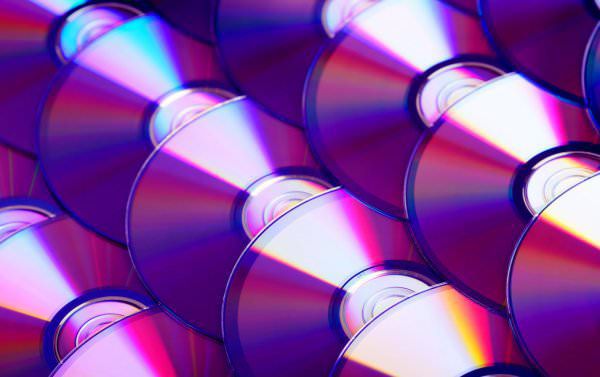
CD-R media come in a variety of colors, but you’ll find that DVD-R only come in purple. Why is that?
DVD-R (DVD Recordable) are produced entirely differently than retail DVDs (movies and games) you can buy at the store. Store bought discs are produced through a process called replication.
In the replication process, information is stamped on to a metalized dye layer from a “glass master” disc. The dye layer is then sandwiched between two paper-thin pieces of high strength polycarbonate for protection. The silver color of a retail DVD is the result of this reflective dye seen through the polycarbonate. The two pieces of polycarbonate plastic also give the DVD its thickness and protects it from scratches—an ideal feature for retail discs that will see lots of wear and tear.
Replication is expensive, however, which can be mitigated by producing high quantity batches (again, a boon for retail). Many replication facilities will not accept jobs smaller than two or five thousand pieces. Replication is best for high volume disc production.
DVD-R discs are purple because of the Azo chemicals used in the production if its organic dye. A recordable DVD-R disc also contains a dye layer sandwiched between two layers of polycarbonate. However, the dye later does not contain any information yet. The organic dye mentioned earlier crystalizes at a known rate when exposed to a laser, when it is “burned.” The burned area of the disc will turn a slightly different color.
Blank CD-R media are available in a range of different colors like silver, green, gold, and black and often reflect on the quality of the disc. However, DVD-R only are available in purple dye.
Check out our Knowledgebase for more in depth information about DVD and other media!

